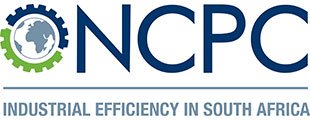The national lockdown because of Covid-19 presents a good opportunity for manufacturing companies to improve their resource and utilities management, says government-funded programme National Cleaner Production Centre South Africa (NCPC-SA) KwaZulu-Natal regional manager Kevin Cilliers.
There is merit in paying more attention to energy and water cost-cutting measures, regardless of whether manufacturers have been able to continue operations during the lockdown, owing to their supplying to essential services, or forced to halt production entirely, he states. This is because billing is mostly based on consumption and many companies are likely to need to find opportunities to reduce operating costs.
The focus of such cost-cutting measures would ideally be on resources such as input materials and utilities such as energy, water, effluent and waste. Given that most manufacturers will be facing reduced production demand, companies should be keeping a close eye on what they are using and where they might be wasting.
“We have found that the monitoring and metering of water and energy resources at many companies are not done accurately. The lockdown period, while production is either halted or slowed, is a good time for companies to maximise their human resources to address any monitoring shortcomings,” he explains.
Cilliers believes it is especially important to manage those items during reduced operating periods, such as during lockdown, and thereafter, as the ramp-up towards achieving full production capacity will be slow and gradual.
“Reaching full production again will likely be a phased-in process, and there will be a lot of catching up to do, and so focus will shift back to production output. Utility resource management typically takes a back seat when production is running at full capacity, but it is important to have a good management practice in place right now for utility use while there is time and space to focus on it.”
Cilliers proposes that companies start with a simple question: “Do you know how much energy and water you are using on a regular basis, and do you have an historical record of that use?”
He says, surprisingly, many manufacturing companies do not necessarily know the answer to this as well as they should. Many companies do not pay much attention to it as long as the account at the end of each month is more or less consistent.
“Companies should be fully and acutely aware of what their consumption is and should be monitoring their consumption closely according to a set baseline target,” Cilliers says.
Many companies simply rely on the suppliers of utilities, such as municipalities, to provide this information through monthly invoices. Companies often do not conduct independent verification of meter readings.
Unfortunately, owing to the high demands placed on municipalities and utility suppliers, meter readings are not always taken every month. Often, these readings are only done every third month, resulting in the billing being estimated as an average.
The absence of any independent reading verification mechanism also means any billing or meter reading errors can easily go undetected, making it difficult to dispute without reliable and supporting evidence.
Many of the manufacturers that do know the levels of their resource use only know it through the main meter readings coming into their facilities. However, once the resource is distributed around their facilities, the exact distribution of such use throughout their operations becomes unclear.
For a monitoring and metering system to be effective it is important that it provides detailed and accurate information of the whole system including sub-metering of sections or departments.
“You can’t manage what you don’t measure. Therefore, it is important that the data around the management of resource use, particularly water and energy, is accurate,” Cilliers emphasises.
Measurement Methodologies
There should be a fairly clear correlation between resource use and production levels. In some cases, this correlation is not evident and this is a clear indication that resource monitoring measures and management controls are not sufficient.
Proper meter-reading processes need not be costly, or cost anything at all.
“A company can make a significant difference in its resource management, with little to no investment required, simply by fully using the meters and instruments already available to them,” Cilliers says, noting that the only cost incurred using this method would be for the human resource required to collect and collate the data manually.
It is even better if an automated system can monitor, measure and record resource use data, which could have a higher upfront cost, but negligible operating cost. Such a system is also likely be more accurate and consistent.
However, it is important to not only collect the data regularly but also interrogate it.
“Many companies collect the data, but don’t do much with it.”
He explains that proper interrogation and analysis of the data collected over time can enable the development of a consumption baseline trend to allow for resource and utility consumption forecasting and performance target setting to inform decision-making and strategic planning.
“If companies just have a good handle on this data, they are in powerful position to start finding ways of influencing their resource consumption,” Cilliers says.
This data can also result in cost savings by creating a greater awareness of consumption patterns and start influencing simple behavioural adjustments in operations such as shutting off equipment when not required or changing settings according to production intensity.








